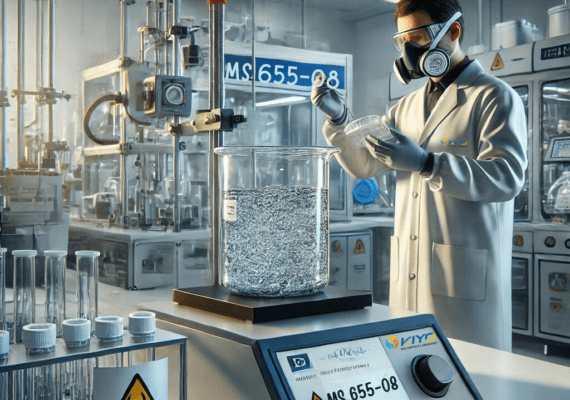
The MS 655-08 is a Malaysian Standard that specifies the requirements for chemical resistance testing of materials, particularly focusing on plastics and rubbers. This standard provides guidelines on how to assess a material’s ability to withstand exposure to chemicals without degrading or losing its functional properties.
The test involves subjecting a material sample to a chemical or mixture of chemicals under controlled conditions, such as temperature and time. The results help determine how well the material can resist chemical attack, which is crucial for applications where materials come into contact with corrosive or reactive substances.
Safety Assurance: In industries like automotive, construction, and electronics, materials are often exposed to chemicals that can be hazardous if the material fails. Chemical resistance testing ensures that the materials used in these industries can withstand such exposure without compromising safety.
Product Longevity: Materials that can resist chemical attack have a longer lifespan, reducing the need for frequent replacements. This not only cuts costs but also minimizes the environmental impact associated with disposing of degraded materials.
Regulatory Compliance: Many industries are governed by strict regulations that require materials to meet certain chemical resistance standards. Compliance with MS 655-08 helps manufacturers meet these regulatory requirements and avoid legal issues.
Performance Optimization: Understanding how a material reacts to different chemicals allows manufacturers to optimize their products for specific applications. For example, in the pharmaceutical industry, packaging materials need to resist degradation from chemicals in medications, ensuring product stability.
The chemical resistance test according to MS 655-08 involves several key steps:
Sample Preparation: A sample of the material is prepared according to the specifications of the standard. This includes cutting the material into standardized sizes and shapes.
Chemical Exposure: The material sample is exposed to the chemical or chemical mixture under specified conditions, such as temperature, duration, and concentration. These conditions are carefully controlled to simulate the environment the material will encounter in real-world applications.
Assessment: After exposure, the material is assessed for any changes in physical, chemical, or mechanical properties. This may include changes in weight, tensile strength, hardness, or surface appearance.
Reporting: The results are documented and compared against the standard’s criteria to determine if the material meets the required level of chemical resistance.
Chemical resistance testing as per MS 655-08 is applicable in various industries:
